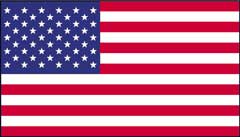Public Act 21-76 requires state agencies and quasi-public agencies to include in bid specifications or requests for proposals a copy or Internet link to a notice created by the SEEC regarding the state contractor bans. State contracts are then required to contain a representation in the contract that the contractor has received such notice. Public Act 21-76 also requires state contractors to provide certain certifications regarding contributions made by their principals.
Notice Requirements and Certifications
- Are these requirements and certifications new? (rev. 2/8/2022)
No, although they have been slightly modified recently in Public Act 21-76, contractors have been required to receive notice of the provisions and to certify facts about their contributions since Governor Rell issued Executive Order 1 in 2004. The exact wording of what was required to be certified was changed slightly over the years. The requirement has now been moved into the state contractor provisions within the SEEC’s jurisdiction. These FAQs are provided to help you understand and fulfill these requirements.
- What is the OPM Form 1? (rev. 2/8/2022)
Consistent with its authority under General Statutes § 4-217, the Office of Policy and Management (“OPM”) created and requires state agencies to use OPM Form 1 to capture the required certifications regarding contributions where agencies are using traditional paper contracts and “wet ink signatures” and do not have a mechanism to contract electronically or to capture electronic notarizations as permitted by General Statutes § § 1-267 through 1-286.
- Who must fill out the certifications? (rev. 2/8/2022)
One designated principal for the state contractor or prospective state contractor who is submitting the bid or proposal can fill out the form on behalf of all of the principals and the contractor.
- What are the certifications that must be made? (rev. 2/8/2022)
There are two certifications that must be made. The first is that neither the company nor its principals have made or solicited any contributions in the past four (4) years that the Commission determined to be illegal without any mitigating circumstances found. The second is that all of the contributions made by any of the principals in the past four (4) years to certain committees have been disclosed.
- Which contributions to which committees must be listed? (rev. 2/8/2022)
Not all contributions to every committee must be disclosed. You must disclose contributions to party committees (state central or town committees); candidate and exploratory committees for candidates to the offices of state representative, state senator or any of the statewide offices (Governor, Lieutenant Governor, Treasurer, Secretary of the State, Comptroller, or Attorney General); and political committees (PACs) that can contribute to or spend on the above listed candidates. You do NOT have to list contributions to committees for local offices, such as a candidate committee for mayor. You do NOT have to list contributions to referendum committees or municipal-only PACs.
- The definition of principal (above) is clear enough, but which principals does the disclosure in the certifications apply to and for what timeframe? (rev. 2/8/2022)
The certification requirement applies to any of the principals of the contractor at the time of the contract signing or, for prospective state contractors, at the time they become prospective contractors, e.g. when they responded to an RFP or became prequalified.
It also applies to any principals who were principals in the past four years but who are no longer principals, because they changed positions or because they have left the contractor’s employment.
The look-back period is four years.
For either of the two types of principals (current or former), it is NOT required that you list any contributions made during the time that they were not principals during the four-year look-back period. In other words, for the look-back period, the contribution disclosure requirement does not apply to the time when the employees were not yet principals or were no longer principals. It follows common sense: disclose contributions by principals during the time they were principals, going back four years.
- What if my company just hired a new CEO, do I have to disclose contributions made before she became a principal? (rev. 2/8/2022)
You only have to disclose contributions made while she was a principal at your company.
- Do I have to disclose contributions made by the president of our company who retired last year? (rev. 2/8/2022)
The certifications should include contributions made while she was a principal during the four year period, but would not need to include contributions made after she left the company.
- How is the four-year look-back period measured? (rev. 2/8/2022)
The look-back period begins at the time of signing the certification.
- How can the state contractor determine the answers to the questions contained in the certifications? (rev. 2/8/2022)
Once the identity of the relevant principals has been ascertained, searches can be performed on the SEEC website for cases (to determine whether the Commission has found any violations) and look up contributions (to determine what relevant contributions were made in the past four years). Both of these tasks can be easily conducted using the SEEC website.
To look up cases do the following:
1) Go to https://seec.ct.gov/Portal/CommDecisions/Landing (or go to the main SEEC page and click on Commission Decisions).
2) In the Docketed Case Resolution Search window type in the last name of the principal.
3) Review search results for cases involving the principal, if any.
Tip:The Search function works best with Chrome, Safari, Microsoft Edge and Firefox browsers, but does not work with Internet Explorer.
To look up contributions do the following:
1) Go to eCRIS Search on the SEEC website and choose Receipt Search: https://seec.ct.gov/eCrisReporting/SearchingContribution.aspx
2) For Type of Receipt, Select In-Kind Contributions and Itemized Contributions from Individuals.
3) For Contributor Name, type in the principal’s last name.
4) For Transaction Date From, select a date four years prior to the date of contract signing or response to bid, which ever is earlier.
5) For Transaction Date To, select the date of contract signing.
6) Leave all other fields blank or set to their default.
7) Hit Search.
8) Report on the OPM Form 1 all relevant contributions.
Repeat these steps for other principals by selecting the Modify Search button from the results page and then change the Contributor Name while leaving all other fields the same. Re-run the search.
Tip: Following these steps may net more contributions in the results that you will need to report. For example, the search results will reveal contributions made by Doe, John and Doe, Jane. If the principal is Jane Doe, only those would be reported. The search query can be refined to reduce unwanted results, which may prove helpful for common names.
 UNITED STATES Full
UNITED STATES Full  CONNECTICUT Full
CONNECTICUT Full 
 UNITED STATES Full
UNITED STATES Full  CONNECTICUT Full
CONNECTICUT Full 